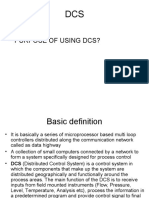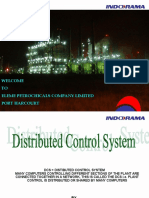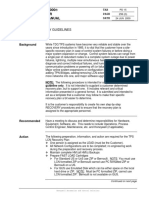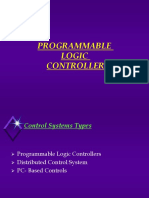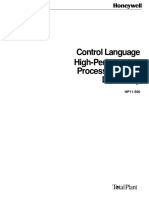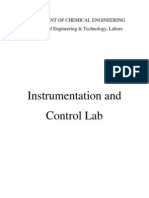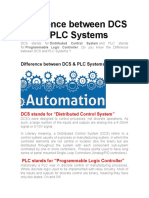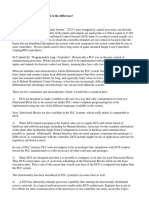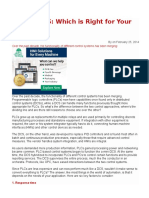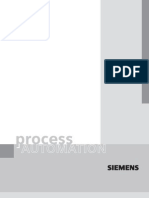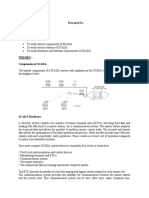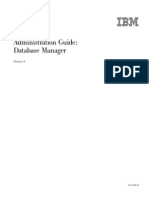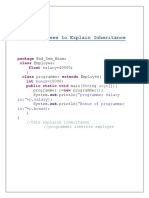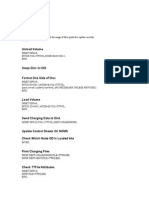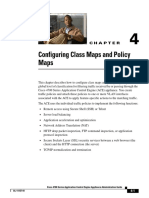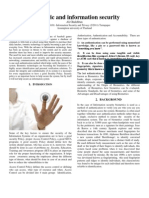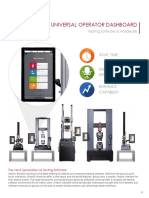Practical No:
AIM: - To compare DCS and PLC
OBJECTIVE:
To study comparison in terms of advantages and disadvantages between DCS and PLC
THEORY:Before selecting DCS or PLC for the control of process plant, following points should be taken into
consideration.
What are you manufacturing and how?
Parameters
PLC
DCS
No of products anufactured
Receipe Parameters
Procedures
Equipment utilization and arbitration
Frequency of changes of formulas and receipes
Single
Constant
Single
Fixed/None
Never
Manufacturing process
Manufacturing or assembly of
specific items (aka "things")
Visibility of Product
Product is visible as it moves
through the process
Multiple
Variable
Multiple or Different
Flexible/ often
Often
Involves the combination and/or
transformation of raw materials (aka
"stuff")
Often impossible to visually see the
product as it moves through the
process
Type of Logic control
Type of Batch Control
High - Speed logic control (such as
motors)
Simple batch control
Regulatory/Analog (loop) control
Complex batch control
What is the value of the product being manufactured?
PLC
DCS
Value of the individual component
beingManufactured is relatively low
The value of a "batch" can be very high (either in
raw material cost or market value)
Downtime only results in lost production, but can
result in dangerous conditions
Downtime can result in process equipment
damage( product hardens, etc.)
Return to steady state production after an
unplanned outage can be long, expensive and
difficult
Downtime mainly results in lost production
Downtime doesnot typically damage the process
equipment
Return to steady state production after an outage
is short and relatively straightforward
What do you view as the "heart" of the system?
PLC
DCS
Heart of the system is the controller as the product Heart of the system is the HMI as th eproduct can
can be seen and logic plays an important role here
not be seen
What does the operator need to be successful?
PLC
The operator's primary role is to handle exceptions
Status information (on/off, Run/Stop) is critical
information for the operator
Exception-based alarming is key information for the
operator
Manufacturing might be able to rum "lights-out"
DCS
The operator's interaction is typically required to keep the
process in its target performance range
Faceplates and anlog trends are critical to "see" what is
happening to the process
Alarm management is key to safe operation of the process and
for responding effectively during plant upset conditions
Failure of the HMI could force the shutdown of the process
What system performance is required?
PLC
DCS
Fast logic Scan (approx. 10ms) is required to perform Control loops require deterministic scan executions at a
motion or motion control
speed of 100 to 500ms
Redundancy may not be cost justified
System redundancy is often required
System can be taken offline to make configuration
Online configuration changes often required
changes
Analog Control: Simple to advanced PID control up to
Analog Control: Simple PID only
Advanced process Control
Asset Management alerts you to what might break
Diagnostics to tell ypu when something is broken
before it does
What degree of customization is required?
PLC
DCS
High Level Programming languages are
available for creating custom logic
Custom logic created from existing function blocks
Customized routines usually required
Standard libraries considered nice features
Provision must be available to integrate
functions/ products into an integrated
architecture
Many algorithms (i.e. PID) are complex and do not
vary among applications
Standard application libraries are expected(function
blocks and faceplates)
Entire system is expected to function as a complete
solution
What are your engineering expectations?
PLC
DCS
Program / configure individual components,
integrate later (bottom up)
Desire customizable platforms to build upon
Up-front design of complete system before
implementation begins (top-down)
looking for significant " out of the box" functionality
System designed to make it "easy" to engineer
process applications
System designed to be flexible
Solution is generic in nature, to be applied on
a wide variety of applications
Use ladder logic to configure application
Use of predefined, Pretested functions saves time
Use function block diagram to configuration
application
Difference between DCS and PLC
DCS
PLC
Specialized software required for programming
Work in multi loop
Less rugged and requires air conditioned rooms
Used for any loop count
No change in performance with increasing loop count
System wise global database
Highly efficient multi tasking mode
Redundancy possible at every level
Communication on high speed serial bus
Automatic Documentation
Single engineering tool
Analog processing done in real frequncy domain function
Typical Perfromance: >1000 PID loops/second
Re engineering efforts reduced by 75% incase of expansion
Fully functional interpalnt connectivity
Simple software used for programming
Work in cyclic loop
Suitable for industrial environment
Used for low loop count
Performance drops with increasing loop count
Individual database for every node
Purely free running mode
Redundancy not possible or limited
Communication on low speed serial bus
Manual Documentaton
Multiple engineering tool
Analog processing simulated through digital computer
Typical Perfromance: 100 PID loops/second
Large engineering efforts required in case of expansion
No interplant connectivity


